Phaneroceptive Tectonomy
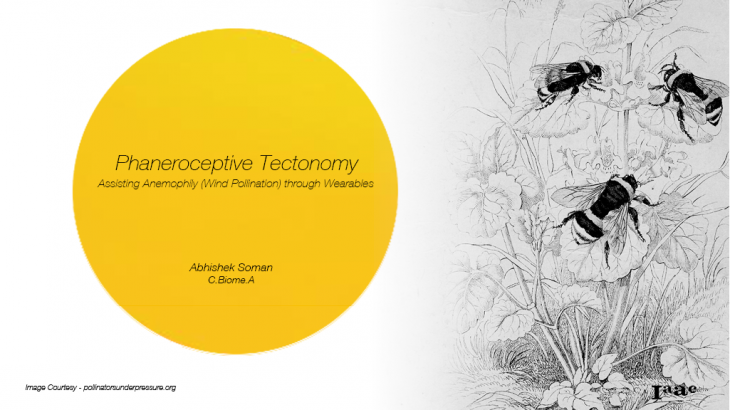
How can “clothes as potential interfaces” between the “human as a wearer” and the “surrounding environment” contribute directly or indirectly to the environment regarding a specific “issue”?
A novel perspective and research about the relationship between the wearer, the clothing envelope and the surrounding environment through parameters such as form, function, responsive behavior, textures and material.
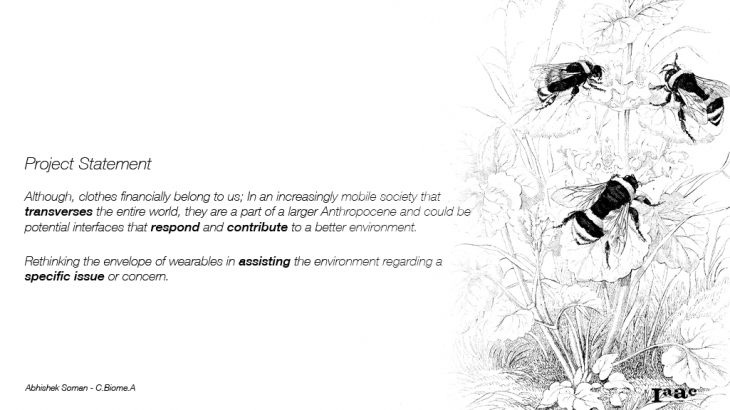
Hypothesis : Can wearables assist in the natural pollination Anthropocene with pollen receptive envelope for human tectonomy (tectonics + anatomy) through performative textures, forms, geometries and material for collecting, (storing) and dispersing wind pollinated pollen?
Important aspects for design considerations (highlighted below in yellow)
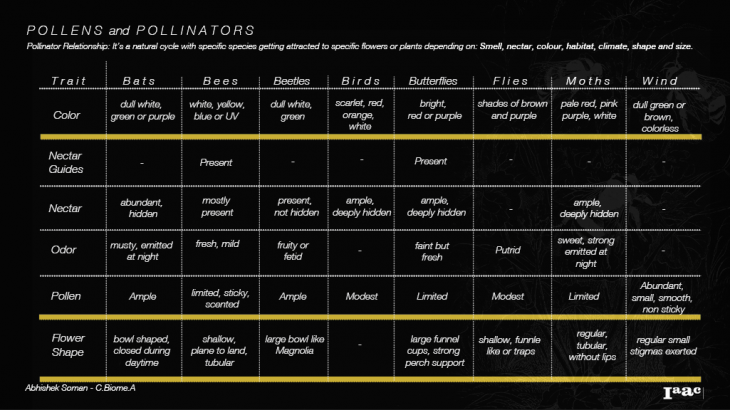
Different Species of Pollinating Bees (selected few in no particular order)
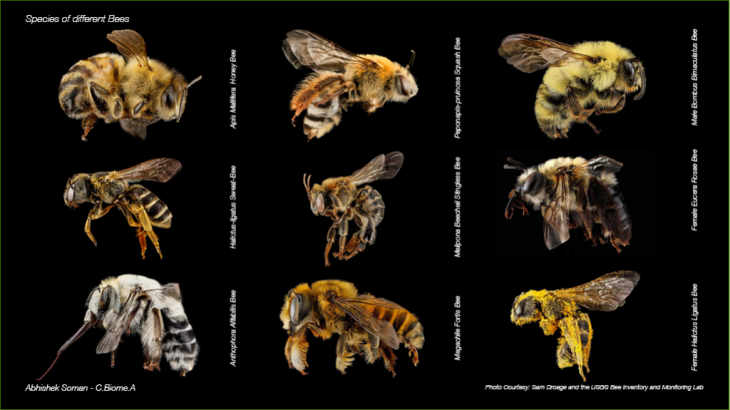
Micro Textures of Bee Hair and Pollen
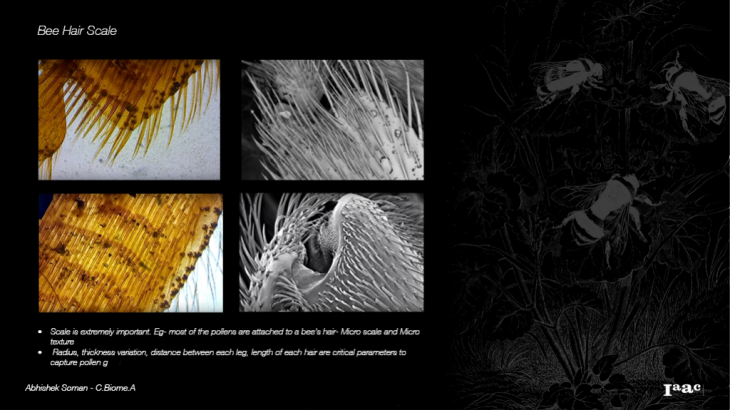
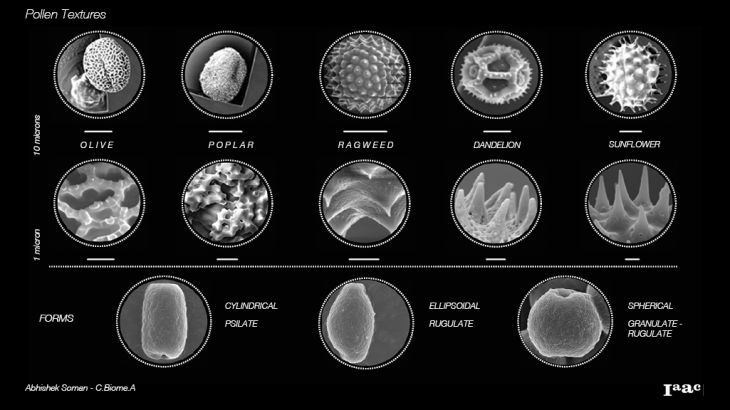
Objective A: Understanding the symbiotic relationship between the pollens and bees for “replicating textures” at a Nano/Micro scale for pollen adherence.
Objective B: Understanding importance of surface area (macro scale) in capturing pollen.
Objective C: Material study and experimentation.
Conceptual Design ideas : Orbicular Forms // Organic Contours // Organic Pods // Aerodynamic Funnels
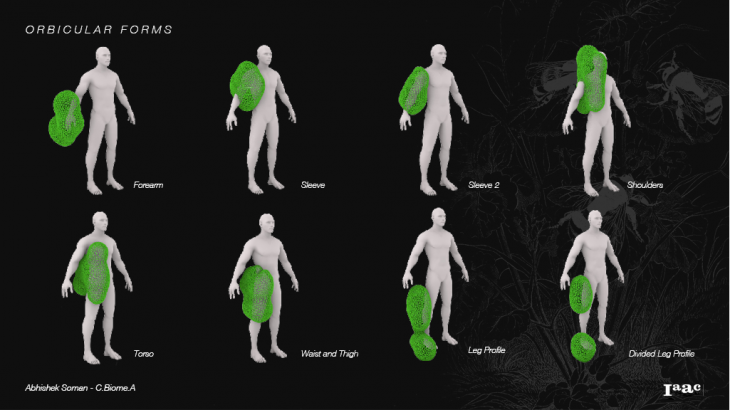
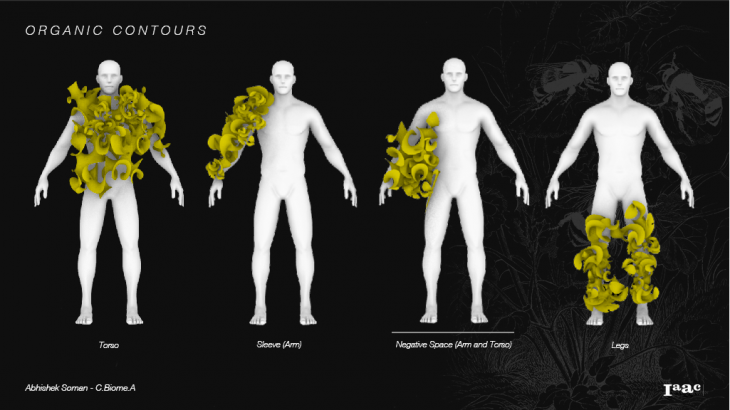
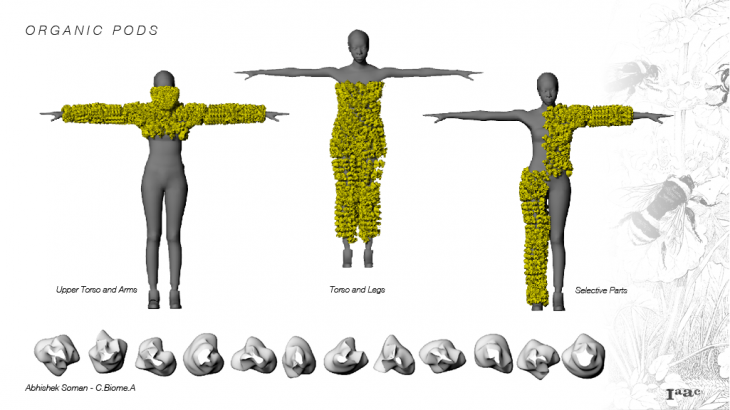
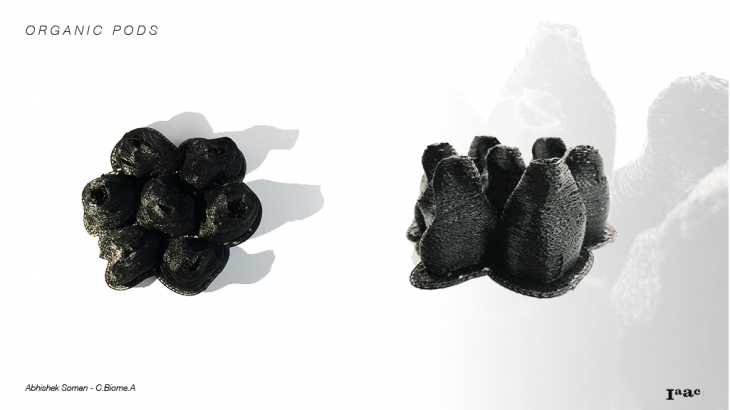
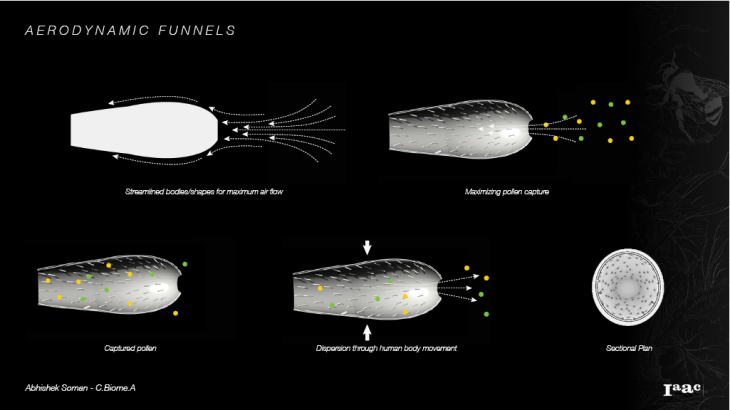
Material Textures and their Micro structures
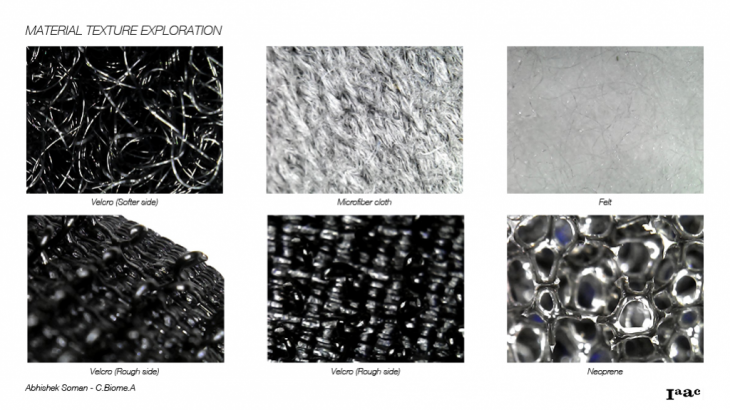
Passive Pollen Collection and Active Dispersion
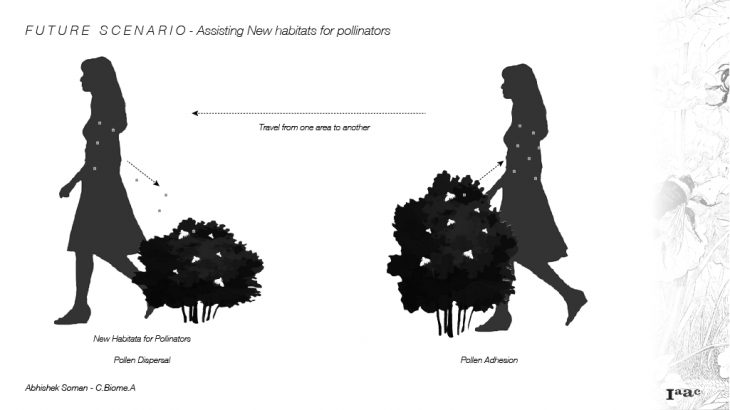
Student : Abhishek Soman
Faculty Guide : Marcos Cruz
C.Biome.A
#PhaneroceptiveTectonomy for MAA02 at IaaC 2018-2019